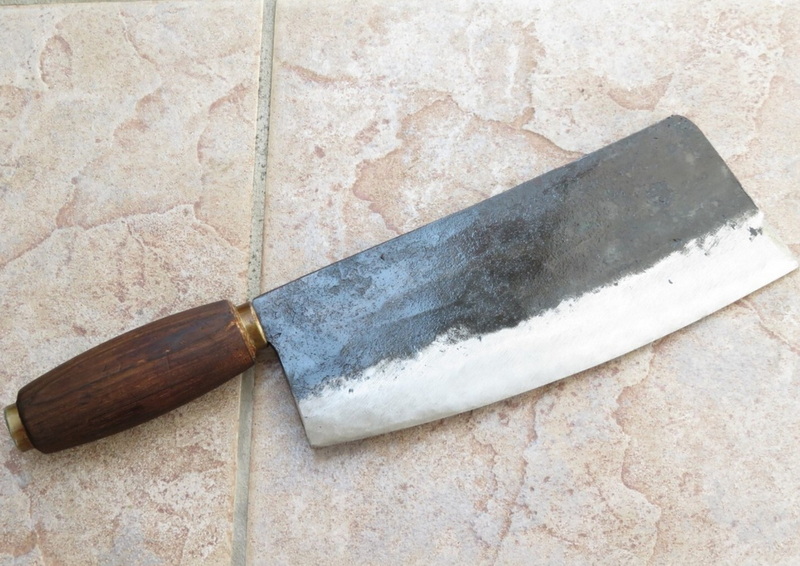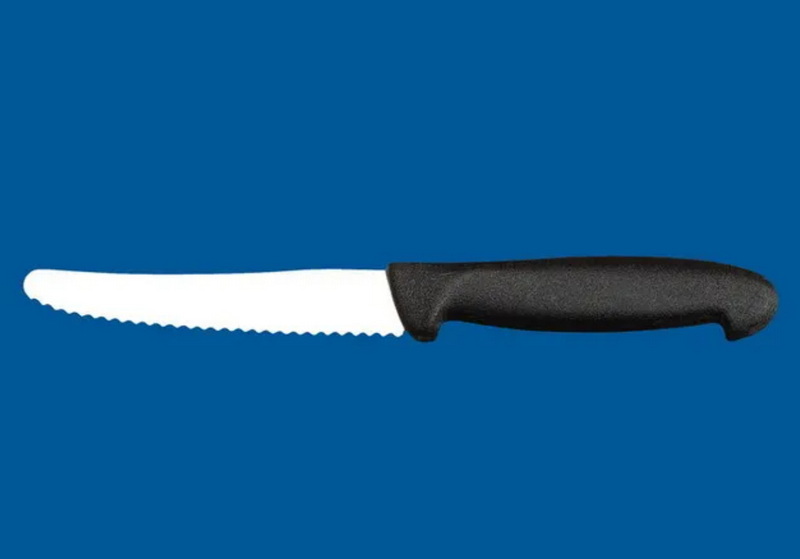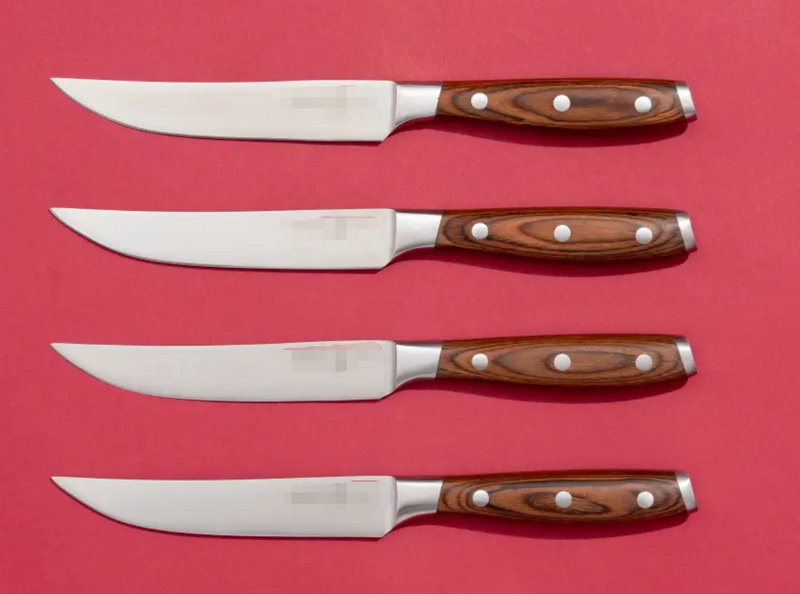- All
- Product Name
- Product Keyword
- Product Model
- Product Summary
- Product Description
- Multi Field Search
Views: 222 Author: Ann Publish Time: 2025-10-28 Origin: Site











Content Menu
● Understanding the Core Difference
● Blade Geometry and Performance
● Material science and corrosion resistance
● Edge retention, sharpening, and maintenance strategies
● Ergonomics and handle design
● Market dynamics and regional preferences
● Care and care instructions for consumers
● Global supply chain and procurement considerations
● Quality assurance and testing
● Case studies and brand positioning
● Marketing collateral and content strategy
● FAQ
>> How does serration affect cutting performance on different meats?
>> Are serrated knives suitable for kitchen twin sets?
>> What are the maintenance implications for restaurants?
>> How can we differentiate our OEM offering?
>> Which markets favor high-end Damascus blade knives?
Steak knife selection is a critical detail for brand builders, wholesalers, and OEM manufacturers serving international markets. The choice between serrated and straight edge steak knives influences dining experiences, maintenance routines, and perceived product quality. In this comprehensive guide, we compare serrated and straight edge blades across performance, material science, ergonomics, maintenance, and market strategy. We also discuss how to position these knife types within an OEM lineup to meet diverse regional preferences, from North America and Europe to Asia-Pacific markets.

Steak knives exist to transform tender, cooked meat into effortless bites. The blade edge determines how the knife engages with meat fibers.
- Serrated steak knives: Teeth along the edge enable a tearing, sawing action that grips and slices through tougher muscle fibers and connective tissue. The design tends to stay effective longer between sharpenings because the teeth do most of the cutting work.
- Straight edge steak knives: A smooth, razor-like edge makes clean, precise cuts with minimal tissue damage. They excel on tender, well-prepared steaks where a precise slice enhances presentation and mouthfeel. The edge requires regular maintenance to preserve peak performance.
Blade geometry is as important as edge type. The two blade families can be configured in multiple ways to optimize performance for OEM applications.
- Serrated blades: The tooth pattern (pointed vs rounded teeth), spacing, and blade height influence cutting action. Serrations concentrate force at the tooth points, enabling a tearing action that reduces suction and drag when slicing through fibrous meat. This makes serrated blades particularly forgiving for home cooks and casual diners who may encounter varied meat textures.
- Straight blades: The continuous straight edge, often sharpened to a fine bevel, delivers a clean, uninterrupted slicing motion. The absence of teeth reduces snagging on connective tissue, yielding a uniform bite and a refined plating effect. Straight edge blades are frequently chosen by premium restaurant programs and private-label brands targeting fine dining experiences.
Material selection affects wear resistance, corrosion resistance, and edge retention, all critical in both consumer and commercial contexts.
- Stainless steels: A common choice for cost-effective OEM programs. 3Cr13, 5Cr15MoV, and 8Cr13MoV are example compositions balancing hardness, toughness, and corrosion resistance.
- High-carbon stainless steels: These blends offer improved edge retention while maintaining reasonable corrosion resistance. They are popular in mid- to high-end OEM lines.
- Carbon steels: While offering exceptional edge potential, carbon steels require more diligent maintenance to prevent rust, especially in humid climates or when exposed to acidic foods.
- Damascus and specialty steels: For premium lines, pattern-welded or layered steels can convey luxury branding. They demand skilled finishing and careful QA to ensure consistent performance.
- Serrated blades: Sharpening is less frequent but requires specialized tools or professional services. The teeth need individual alignment checks to maintain performance. For OEM programs, consider offering serrated blades with replaceable or serviceable sharpening components.
- Straight blades: Regular honing and periodic professional sharpening help maintain the razor edge. In OEM contexts, provide guidance on compatible sharpening tools and consumer maintenance tips to protect warranties.
Handle design impacts user comfort, control, and perceived quality. For OEM manufacturers, harmonizing blade and handle geometry with consumer demographics is crucial.
- Wood handles: Offer warmth and traditional appeal but require proper sealing and maintenance. In humid markets or regions with dishwasher use, consider moisture-resistant finishes.
- Composite and resin handles: Durable, color-stable, and easy to sanitize—well-suited for family packs and commercial programs.
- Stainless steel handles: Provide a cohesive kitchen-tool look with easy cleaning but may require texturing to improve grip.
Regional tastes influence whether serrated or straight edge knives perform better in a given market.
- North America: Broad acceptance of serrated blades for value-oriented sets and multi-task capabilities. However, there is a thriving segment prioritizing straight edge knives for chef-led experiences in premium lines.
- Europe: A balance between premium straight edge knives for gastronomy-focused customers and serrated knives for family dining and general use. Private-label programs are common, with customization in handle materials and branding.
- Asia-Pacific: Demand varies by country; some markets favor serrated blades for durability and ease of use, while others emphasize straight edge blades for fine-dining and culinary education programs.
- Latin America and Middle East: Growing interest in mix-and-match sets with both blade types, driven by hospitality sectors and evolving home dining trends.
As a Chinese kitchen knife factory serving international brands, your OEM strategy should leverage the strengths of both blade styles.
- Flexible product platforms: Offer a modular lineup where customers can mix serrated and straight edge knives in a single set, enabling retailers to tailor bundles to regional preferences.
- Customization options: Provide choices in blade material, edge finishing (polish vs. matte), tang construction, and handle materials. Allow branding on blades via laser etching and on handles via printing or engraving.
- Packaging and labeling: Design packaging that highlights key differentiators such as edge type, material composition, and care instructions. Include QR codes linking to care tutorials and warranty information.

Clear, actionable care instructions support product satisfaction and reduce warranty issues.
- Hand washing is generally recommended to maximize longevity, regardless of blade type.
- Dry thoroughly to prevent corrosion and handle degradation.
- Use appropriate sharpening tools: serrated blades with specialized serration sharpeners; straight blades with stones, rods, or professional services.
- Use a proper cutting board and maintain proper knife technique to prevent slips.
- Keep blades away from children and ensure safe storage in knife blocks with blade guards or magnetic sheaths.
- High-resolution product photography: capture multiple angles, showing blade geometry and handle ergonomics.
- Sourcing blade steel: Establish partnerships with steel mills known for consistency in hardness and toughness.
- Heat treatment and finishing: Invest in QA protocols to ensure uniform hardness across production batches.
- Packaging materials: Source durable, attractive packaging that aligns with target markets' expectations for premium or value brands.
- Certification and compliance: Ensure compliance with country-specific food-contact and safety regulations.
- Short term (0–6 months): Launch a dual-offering program with serrated and straight edge variations; develop base materials and handles that can be customized per client. Create a marketing kit highlighting differences and care guidelines.
- Medium term (6–12 months): Introduce premium finishes such as Damascus-pattern blades, enhanced handle ergonomics, and improved corrosion resistance. Build an OEM catalog with detailed technical sheets for each blade type.
- Long term (12–24 months): Expand into advanced manufacturing techniques, including micro-bevel straights and tailored serration patterns for optimized performance with different meat textures. Explore sustainable material options for handles to appeal to eco-conscious brands.
- Cutting tests: Use standardized meat samples to evaluate slice quality, cohesion, and ease of cutting.
- Edge retention tests: Assess sharpness retention after standardized use cycles, including cleaning and minor rust exposure scenarios.
- Ergonomic testing: Gather feedback from a diverse group of testers to refine handle geometry for comfort and control.
- Case study A: A mid-tier OEM brand expands into a mixed serrated and straight edge lineup, achieving a 20% increase in order frequency from retail partners by offering configurable sets.
- Case study B: A premium private-label program uses Damascus-pattern blades with ergonomic handles to target upscale dining establishments, yielding higher price points and improved retailer buy-in.
- Create product guides highlighting blade types, materials, and care.
- Develop comparison charts with clear, consumer-friendly language and emphasis on practical use cases.
- Produce SEO-optimized blog posts and landing pages for terms such as “Steak Knife,” “serrated steak knife,” and “straight edge steak knife,” while weaving in OEM-specific terms for brand clients.
- Serrated knives: Generally exhibit lower maintenance costs and longer service intervals, which can translate into favorable lifetime value metrics for consumers.
- Straight edge knives: Often command higher price points due to precision manufacturing, premium materials, and finish quality. Bundling with premium handles can further improve perceived value.
Deciding between serrated and straight edge steak knives hinges on intended use, maintenance considerations, and target market preferences. Serrated blades offer durability, versatility, and lower maintenance, making them ideal for value-oriented and family-oriented OEM programs. Straight edge blades deliver precision, clean cuts, and upscale presentation, suited for premium channels and professional kitchens. By combining both blade types within a flexible OEM platform, manufacturers can address diverse consumer segments, support globalization efforts, and enhance retailer appeal. A well-structured product line—with thoughtful material selection, ergonomic design, and robust care guidance—can maximize market reach while maintaining quality and consistency across batches.

Serrations grip fibrous structures, aiding cutting through tougher fibers and crusts, while straight edges excel on tender, uniformly cooked portions.
Yes, many OEM programs design multi-tool sets combining serrated and straight edge blades for consumer flexibility.
Serrated blades require less frequent sharpening, minimizing downtime, whereas straight edge blades demand regular honing for peak performance.
Provide unique handle materials, blade finishes, or branding options, plus a warranty package and care tutorials tailored to the client market.
Gourmet restaurants and luxury home-chef segments often prefer Damascus or specialty steels for aesthetic and performance advantages.
The Ultimate Professional Knives for Halal Butchery in Middle Eastern Kitchens
Chef Knife Size Guide: Choosing Between 6″, 8″, 10″, And 12″
Custom Knife Handles: How To Design A Chef Knife That Fits Your Hand Perfectly
Chef Knife Surface Treatments Guide: From Polished Migaki To Damascus Patterns
Inside Our Professional Knife Sample Room: Quality You Can See
Universal Knife Block Buying Guide: Modern Acrylic & ABS Knife Holders for Professional Kitchens
Universal Knife Block: The Complete Guide To Modern, Hygienic Knife Storage
The Complete Guide To Red Handle Knife Sets: Style Meets Functionality in The Kitchen
Professional Knives for Halal Butchery And Middle Eastern Cuisine